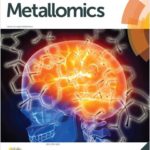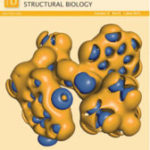APVV-0721-10
Myocardial remodelling – the role of calcium signalling (REMOD)
Principal Investigator: Alexandra ZahradníkováDuration: May 2011 – October 2014
|
Annotation:Heart failure is the result of long-term pathological processes that lead to specific damage accompanied by activation of compensatory mechanisms. A common trait, likely due to convergence of many regulatory mechanisms, is the changed calcium signalling in cardiac myocytes. The subject of the project is the impairment of calcium signalling in early stages of myocardial injury with emphasis on the role of the ryanodine receptor (RYR2), a protein central for calcium signalling. The methodology is based on comparing the properties of calcium signalling and the microarchitecture of myocytes of rat myocardium exposed to stress stimuli. Myocardium adapted to spontaneous physical activity will be used as a model of physiologically remodelled myocardium. Myocardium from animals treated with a single high dose of isoproterenol (similar to infracted myocardium) and with a single high dose of streptozotocin (similar to diabetic myocardium) will be used as models of injured myocardium. The effect of stress stimuli on myocardial remodelling will be verified in each subject. The extent of physiological and pathological variability of calcium signalling parameters will be determined by comparison with myocytes from myocardia adapted to sedentary regime. The project will allow identification of molecular and cellular factors determining the function of RYR2 in remodelled myocardium and to deduce the critical sites of calcium signalling impairment. |
Keywords:Heart failure, myocardial injury, cardiac myocyte, calcium signalling, ryanodine receptor |
Objectives:The aim of the project is to elucidate the role of molecular and cellular factors of diastolic and systolic calcium signalling in early stages of adaptation of cardiac myocytes to stress stimuli leading to myocardial remodelling. The aim will be reached by examining RYR2 activity in spontaneous and evoked calcium sparks, by examining the activity of single RYR2 and by examining the microarchitecture of the myocytes in experimental models of myocardial injury. |
Results:The project focused on the study of calcium signalling and of the relevant microarchitecture of myocytes during myocardial adaptation to physiological and pathophysiological load.
We have identified the main molecular and cellular factors determining the function of the calcium signalling system of cardiac myocytes in early stages of heart failure development and we demonstrated their participation in myocardial remodelling. The results advance understanding of calcium signalling in cardiac myocytes of healthy and experimentally overloaded myocardium. The new findings will aid identification of pathological changes in the structure and function of cardiac myocytes in congenital as well as acquired disorders of RYR2 function and related arrhythmias, sudden cardiac death and heart failure. |
Publications: |
 |
Novotova M, Zahradnikova A Jr, Nichtova Z, Kovac R, Kralova E, Stankovicova T, Zahradnikova A, Zahradnik I (2020): Structural variability of dyads relates to calcium release in rat ventricular myocytes. Sci Rep 10: 8076 doi: 10.1038/s41598-020-64840-5. |
 |
Hotka M, Zahradnik I (2017): Reconstruction of membrane current by deconvolution and its application to membrane capacitance measurements in cardiac myocytes. PLoS One 12: e0188452. |
| Faltinova A, Tomaskova N, Antalik M, Sevcik J, Zahradnikova A (2017). The N-terminal region of the ryanodine receptor affects channel activation. Front Physiol 8: 443. | |
 |
Petrovic P, Valent I, Cocherova E, Pavelkova J, Zahradnikova A (2015): Ryanodine receptor gating controls generation of diastolic calcium waves in cardiac myocytes. J Gen Physiol 145: 489-511. |
 |
Huntosova V, Stroffekova K, Wagnieres G, Novotova M, Nichtova Z, Miskovsky P (2014): Endosomes: guardians against [Ru(Phen)] photo-action in endothelial cells during in vivo pO2 detection? Metallomics 6: 2279-2289. |
 |
Borko L, Bauerova-Hlinkova V, Hostinova E, Gasparik J, Beck K, Lai FA, Zahradnikova A, Sevcik J (2014): Structural insights into the human RyR2 N-terminal region involved in cardiac arrhythmias. Acta Cryst D70: 2897–2912. |
 |
Hotka M, Zahradnik I (2014): Correction of the cross-talk error in cell membrane impedance analysis. In: YBERC 2014. Bratislava, Slovak Republic. Proceedings of The 6th International Young Biomedical Engineers and Researchers Conference, July 2-4, 2014, p. 31-34. ISBN 978–80–971697–0–1. |
| Hotka M, Zahradnik I (2014): High resolution measurement of electrical impedance of excitable cells. In: Adept 2014. 2nd International Conference on Advances in Electronic and Photonic Technologies, Tatranská Lomnica, June 1-4, 2014, Proceedings of Adept, p. 55-58. | |
 |
Janicek R, Hotka M, Zahradnikova-Jr A, Zahradnikova A, Zahradnik I (2013): Quantitative analysis of calcium spikes in noisy fluorescent background. PLoS One 8: e64394. |
| Piquereau J, Caffin F, Novotova M, Lemaire C, Veksler V, Garnier A, Ventura-Clapier R, Joubert F (2013): Mitochondrial dynamics in the adult cardiomyocytes: which roles for a highly specialized cell? Front Physiol 4: 102. | |
| Zahradnikova A, Zahradnik I (2012). Construction of calcium release sites in cardiac myocytes. Front Physiol 3: 322. | |
 |
Janicek R, Zahradnikova-Jr A, Polakova E, Pavelkova J, Zahradnik I, Zahradnikova A (2012): Calcium spike variability in cardiac myocytes results from activation of small cohorts of RYR2 channels. J Physiol 590: 5091-5106. |
 |
Tencerova B, Zahradnikova A, Gaburjakova J, Gaburjakova M (2012): Luminal Ca2+ controls activation of the cardiac ryanodine receptor by ATP. J Gen Physiol 140: 93-108. |
 |
Nichtova Z, Novotova M, Kralova E, Stankovicova T (2012): Morphological and functional characteristics of models of experimental myocardial injury induced by isoproterenol. Gen Physiol Biophys 31: 141-51. |
 |
Bauerova-Hlinkova V,Bauer J, Hostinova E, Gasperik J, Beck K, Borko L, Faltinova A, Zahradnikova A, Sevcik J (2011): Bioinformatics Domain Structure Prediction and Homology Modeling of Human Ryanodine Receptor 2. Editor Mahmood A. Mahdavi. In Bioinformatics-Trends and Methodologies. – Rijeka, p. 325-352. ISBN 978-953-307-282-1. |

 contact
contact
